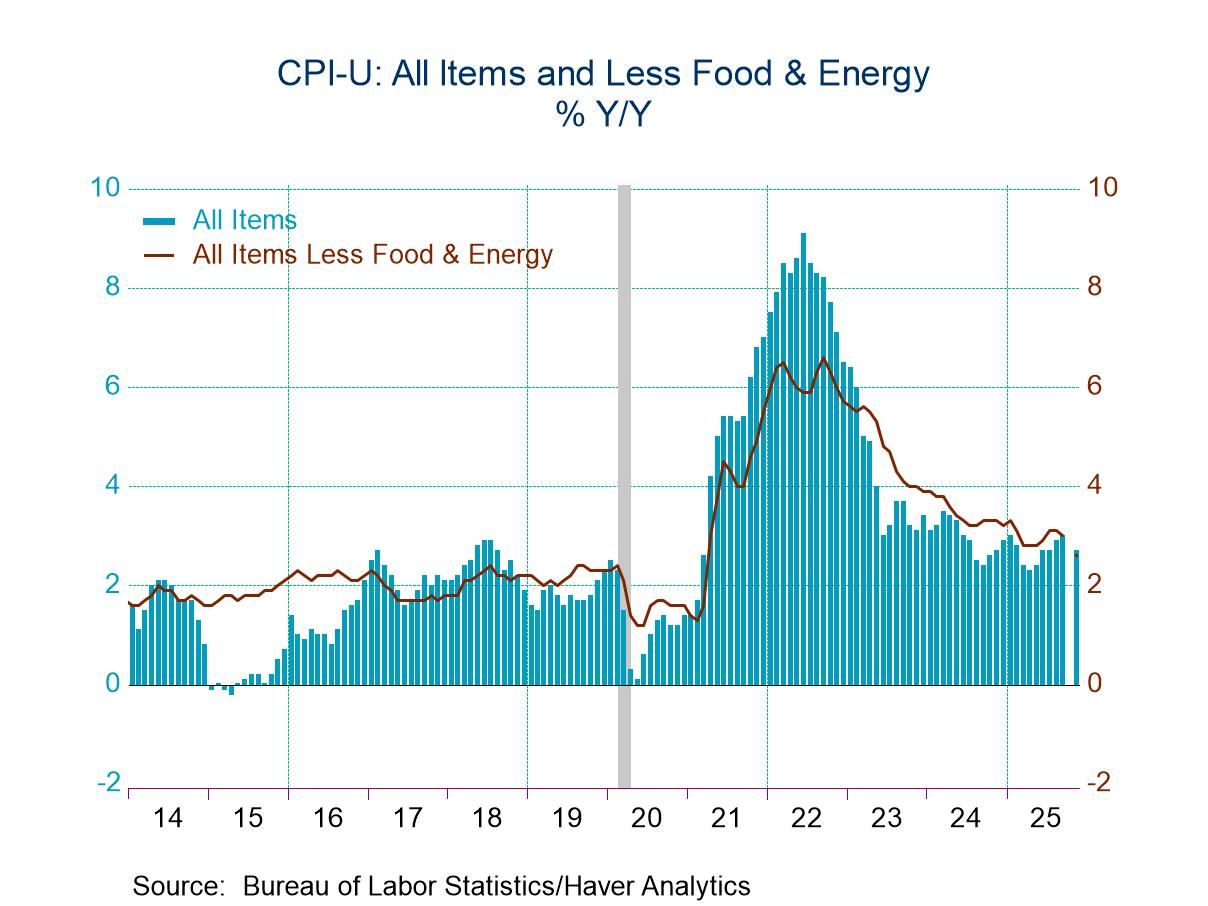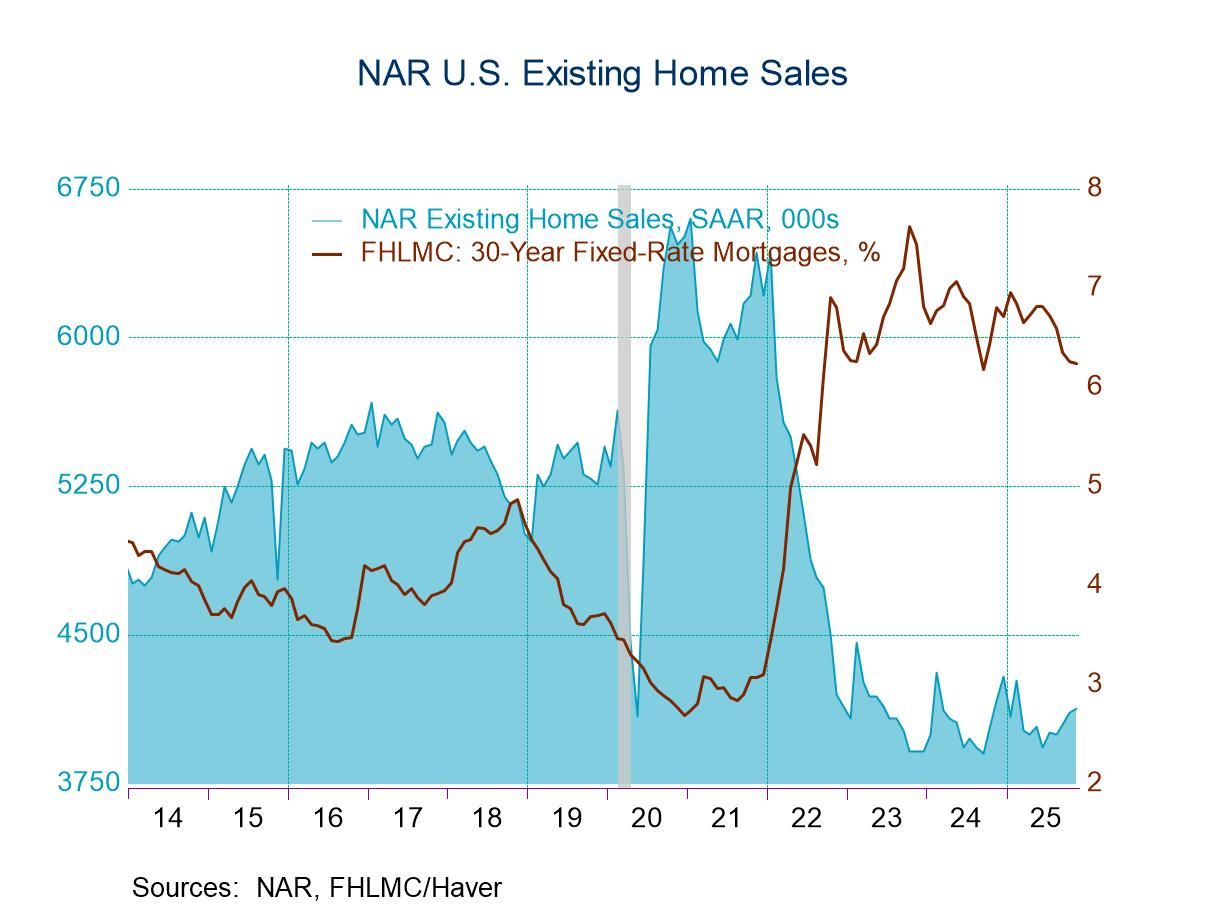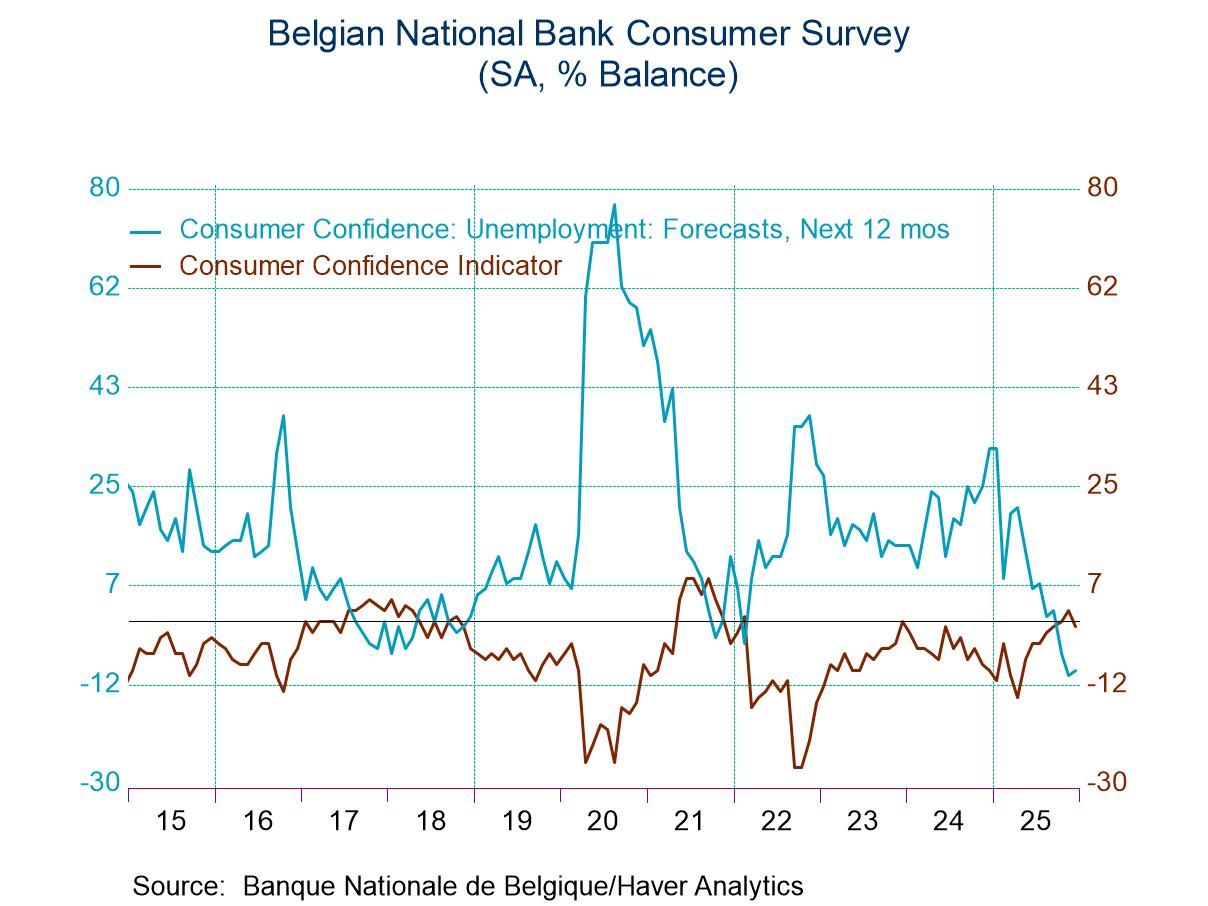 Global| Jun 06 2018
Global| Jun 06 2018U.S. Trade Deficit Declines Modestly
by:Tom Moeller
|in:Economy in Brief
Summary
The U.S. trade deficit in goods and services fell to $48.20 billion during April from $47.21 billion during March, revised from $48.96 billion. It was the smallest deficit since September. A $49.0 billion April deficit had been [...]
The U.S. trade deficit in goods and services fell to $48.20 billion during April from $47.21 billion during March, revised from $48.96 billion. It was the smallest deficit since September. A $49.0 billion April deficit had been expected in the Action Economics Forecast Survey. Last quarter, improvement in the trade deficit had a modestly positive effect on real GDP growth following a sharply negative effect in Q4'17. Exports improved 0.3% (9.9% y/y) following a revised 2.2% gain. Imports eased 0.2% (+8.0% y/y) after a 1.4% decline. Foreign trade data were revised back to 2010.
The deficit on goods trade eased to $67.34 billion from $68.52 billion. Exports of goods gained 0.2% (11.3% y/y) following a 2.2% rise. Exports of foods, feeds & beverages jumped 5.6% (8.5% y/y) following an 8.2% surge. Exports of industrial materials rose 3.0% (21.4% y/y) following a 3.0% increase. Nonauto consumer goods exports were up 0.4% (7.6% y/y) following a 2.4% rise. To the downside, exports of motor vehicles & parts fell 1.5% (+10.3 y/y) following a 2.3% decline. Capital goods exports declined 3.0% (+5.8% y/y) and reversed a 3.9% rise.
Imports of goods slipped 0.4% (+8.0% y/y) following a 1.4% drop. Working lower were nonauto consumer product imports which fell 5.1% (+3.0% y/y) following a 1.8% drop. Motor vehicle & parts imports were off 2.9% (+0.7% y/y) after a 0.6% fall. Foods, feeds & beverage imports fell 0.5% (+7.9% y/y) after a 1.9% decline. Increasing were capital goods imports which improved 0.7% (10.3% y/y) after a 1.9% drop. Industrial supplies & materials imports rose 2.5% (15.2% y/y) after a 0.8% fall.
All non-petroleum goods imports declined 0.9% (+6.6% y/y) after a 1.4% fall. Petroleum imports increased 4.9% (24.7% y/y) following two months of decline. The per barrel cost of crude oil rose to $54.50 (20.0% y/y), up from a $27.49 low in February 2016. The value of energy-related petroleum product imports increased 6.3% (24.6% y/y) after a 9.6% rise. The quantity of energy-related product imports rose 4.4% (3.3% y/y) after a 10.7% increase.
The surplus on services trade was unchanged at $22.2 billion in April. Services exports increased 0.6% (8.6% y/y) after a 1.2% decline Travel exports eased 0.3% (+2.6% y/y) after a 0.1% slip. Charges for the use of intellectual property gained 0.8% (5.8% y/y) after a 0.8% rise. Transport exports gained 1.0% (8.9% y/y) following a 0.4% decline.
Imports of services rose 0.6% (8.6% y/y) after a 1.2% decline. Charges for the use of intellectual property increased 1.6% (22.1% y/y) after a 15.5% decline. U.S. residents' travel abroad held steady (8.1% y/y) following a 1.6% increase. Transport charges strengthened 1.6% (6.0% y/y), after a 0.2% gain.
By country, the goods trade deficit with China deepened m/m to $28.0 billion in April (NSA) after a $25.9 billion deficit in March. Exports rose 4.7% y/y while imports rose 2.0% y/y. The deficit with the European Union deepened m/m to $14.6 billion (NSA) from $12.1 billion. Exports increased 17.2% y/y and imports rose 16.0% y/y. The trade deficit with Japan eased m/m to $6.3 billion (NSA) from $6.4 billion as exports declined 2.2% y/y and imports increased 8.1% y/y.
The international trade data can be found in Haver's USECON database. Detailed figures are available in the USINT database. The expectations figures are from the Action Economics Forecast Survey, which is carried in AS1REPNA.
| Foreign Trade in Goods & Services (Current $) | Apr | Mar | Feb | Y/Y | 2017 | 2016 | 2015 |
|---|---|---|---|---|---|---|---|
| U.S. Trade Deficit | $46.20 bil. | $47.21 bil. | $55.54 bil. | $45.07 bil. (4/17) |
$552.28 bil. | $502.00 bil. | $498.53 bil. |
| Exports of Goods & Services (% Chg) | 0.3 | 2.2 | 1.8 | 9.9 | 6.1 | -2.5 | -4.6 |
| Imports of Goods & Services (% Chg) | -0.2 | -1.4 | 2.4 | 8.0 | 6.8 | -1.9 | -3.5 |
| Petroleum (% Chg) | 4.9 | -2.0 | -0.9 | 24.7 | 27.2 | -19.5 | -45.5 |
| Nonpetroleum Goods (% Chg) | -0.9 | -1.4 | 2.9 | 6.6 | 5.6 | -1.2 | 2.2 |
U.S. Mortgage Loan Applications Fall As Interest Rates Rise
by Tom Moeller June 6, 2018
The Mortgage Bankers Association reported that its total Mortgage Applications Volume Index was off 2.6% last week (-11.9% y/y), following a similar fall during the prior week. It was the fifth consecutive week of decline and left applications at the lowest level since December.
The effective interest rate on a 15-year mortgage increased to 4.45% and remained up sharply from September's low of 3.46%. It was the highest rate since April 2011. The effective rate on a 30-year fixed-rate loan increased to 5.01%. The rate on a Jumbo 30-year loan rose to 4.93%. For adjustable 5-year mortgages, the effective interest rate held steady w/w at 4.29%, up from the July 2016 low of 2.87%.
Purchase loan applications declined 2.0% (+2.4% y/y), after a 2.1% fall during the prior week. Applications to refinance were off 3.7% (-27.4% y/y), also about the same as the week prior.
The average mortgage loan size rose to $301,400 (2.7% y/y). For purchases, the average loan size increased to $390,200 (0.3% y/y); for refinancings, it held steady at $267,500 (2.7% y/y).
Applications for adjustable-rate loans declined 26.9% y/y, while applications for fixed-rate loans fell 10.6% y/y.
The survey covers over 75% of all U.S. retail residential mortgage applications and has been conducted weekly since 1990. Respondents include mortgage bankers, commercial banks and thrifts. The base period and value for all indexes is March 16, 1990=100. The figures for weekly mortgage applications and interest rates are available in Haver's SURVEYW database.
| MBA Mortgage Applications (%, SA) | 06/01/18 | 05/25/18 | 05/18/18 | Y/Y | 2017 | 2016 | 2015 |
|---|---|---|---|---|---|---|---|
| Total Market Index | -2.6 | -11.9 | -17.8 | 15.6 | 17.9 | ||
| Purchase | -2.0 | 2.4 | 5.6 | 13.3 | 15.5 | ||
| Refinancing | -3.7 | -27.4 | -34.0 | 17.3 | 19.7 | ||
| 15-Year Mortgage Effective Interest Rate (%) | 4.45 | 3.56 (May'17) | 3.59 | 3.22 | 3.3 |
Tom Moeller
AuthorMore in Author Profile »Prior to joining Haver Analytics in 2000, Mr. Moeller worked as the Economist at Chancellor Capital Management from 1985 to 1999. There, he developed comprehensive economic forecasts and interpreted economic data for equity and fixed income portfolio managers. Also at Chancellor, Mr. Moeller worked as an equity analyst and was responsible for researching and rating companies in the economically sensitive automobile and housing industries for investment in Chancellor’s equity portfolio. Prior to joining Chancellor, Mr. Moeller was an Economist at Citibank from 1979 to 1984. He also analyzed pricing behavior in the metals industry for the Council on Wage and Price Stability in Washington, D.C. In 1999, Mr. Moeller received the award for most accurate forecast from the Forecasters' Club of New York. From 1990 to 1992 he was President of the New York Association for Business Economists. Mr. Moeller earned an M.B.A. in Finance from Fordham University, where he graduated in 1987. He holds a Bachelor of Arts in Economics from George Washington University.






